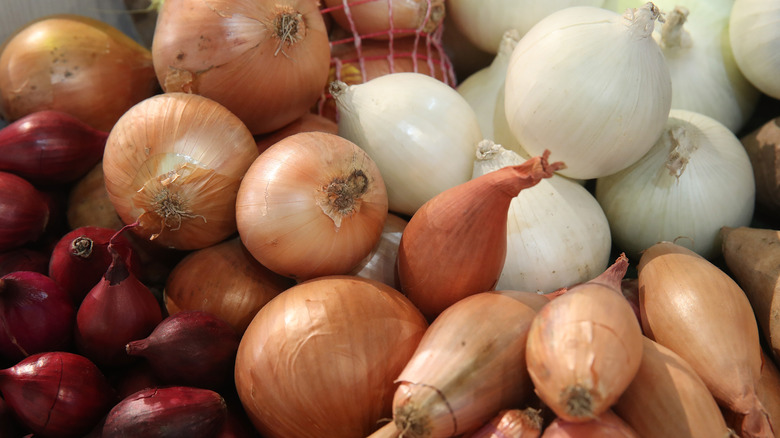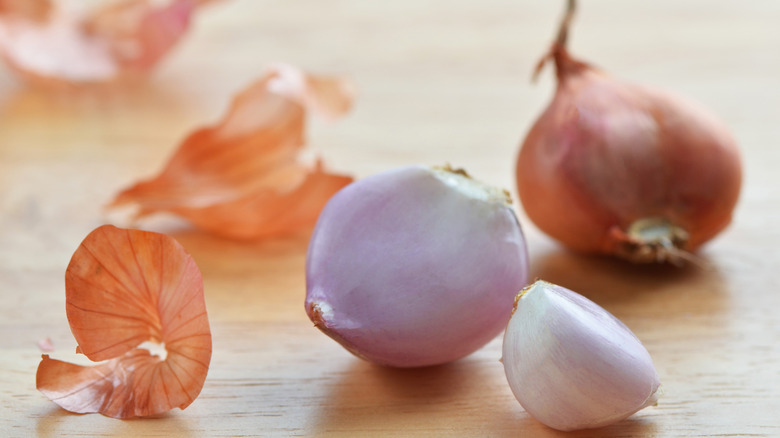This Is The Difference Between Shallots And Onions
According to Bon Appétit, shallots are essentially a type of onion. Part of the Allium cepa family, shallots, like other onion varieties, grow from a bulb and have the same eye-watering properties. Shallots have a sweeter, milder flavor than other types of onions, and can be used to replace onions in almost any recipe.
If you want to use shallots instead of onions when cooking, just be sure to use the same total volume as called for of onions. A good ratio is a few shallots for each small onion required. BBC does not recommend replacing shallots with onions, however, as many recipes which call for shallots are counting on their less intense flavor as well as the lower water content of shallots over onions. When choosing shallots, they advise looking for firm bulbs without soft spots or damp patches. If stored in a cool, dry spot, shallots should keep for several weeks before they spoil.
How to distinguish shallots from onions
Shallots are teardrop shaped and a bit smaller than onions. Once peeled, their cloves can be separated, similar to garlic. Onions, of course, do not have cloves. Each bulb will generally contain two or three cloves, which are flat on one side and rounded on the other. The skin of the small bulbs can range in color from pink to copper to gray, depending on the variety available at your local grocer.
Masterclass says the flesh inside of the shallot cloves will usually be colored light purple and white, and lists differences between the three main varieties of shallots. The classic shallot variety is the French gray shallot, which has the grayest skin. The Jersey shallot is the most common type found in the U.S. and is the rosiest color. The third type is the echalion shallot, which is also known as the banana shallot. This kind is actually a cross between a shallot and an onion and is usually larger than the other shallot varieties.
Shallots are commonly eaten roasted, pickled, or raw in many different types of cuisines.

